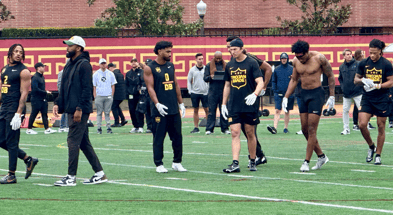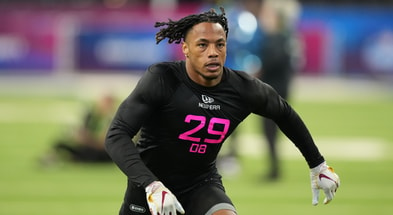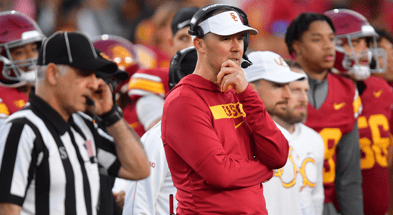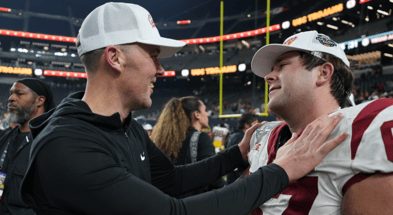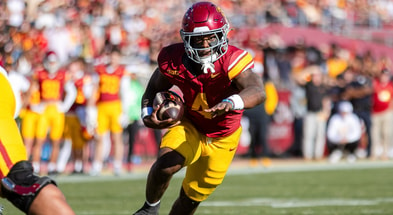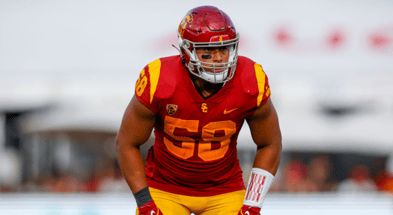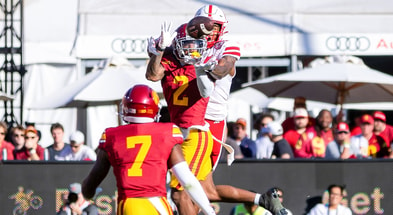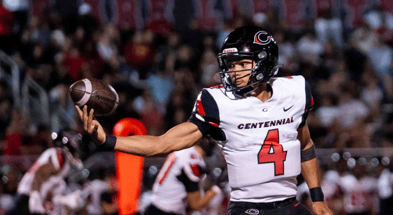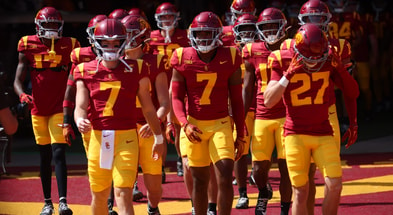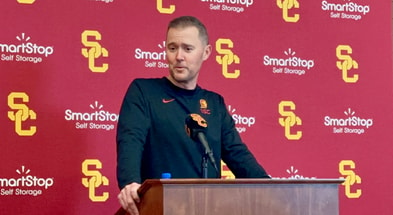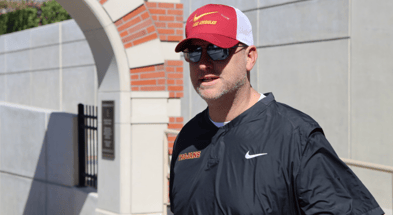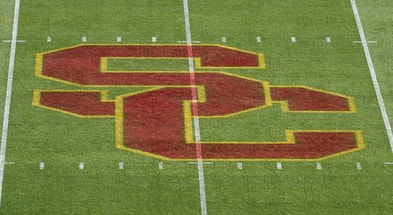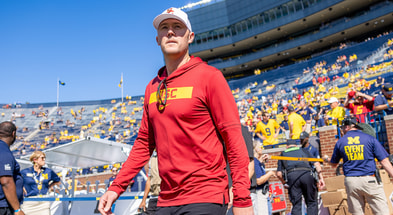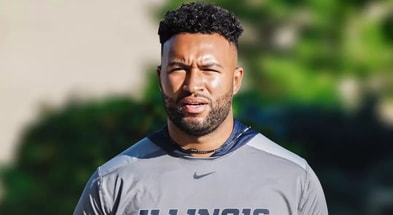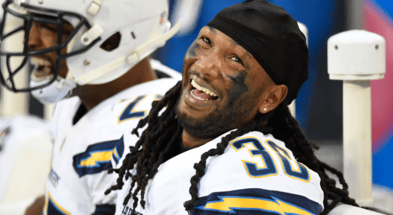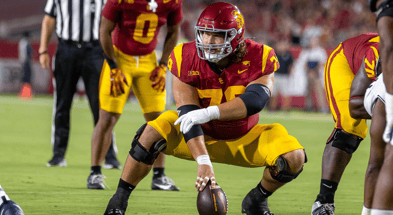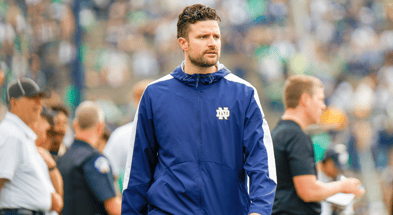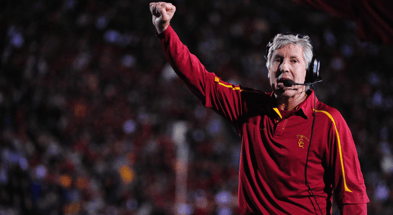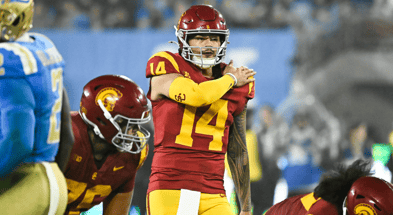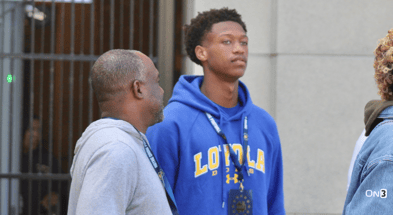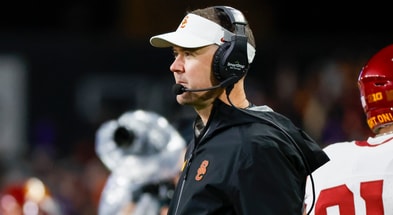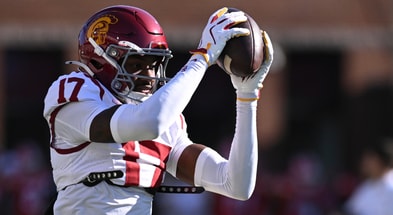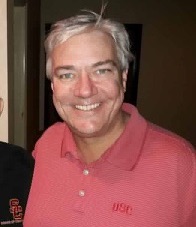Musings from Arledge: Kennedy Polamalu Reflects on Projecting Some Legendary USC Players
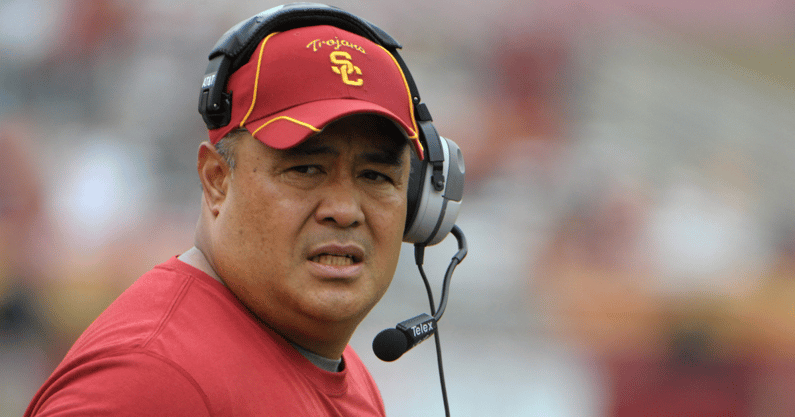
This week, I interviewed two members of the famous USC Polamalu family: Kennedy Polamalu—you may remember him as “Kennedy Pola,” which is how he was known until 2011 when he changed his name back to the original “Polamalu”—and his nephew Isaiah Pola-Mao. Kennedy was a fullback at USC from 1982 to 1985 before beginning his lengthy coaching career in college (USC and UCLA) and the NFL (Vikings and, currently, the Raiders).
Isaiah, of course, played safety as USC recently and is now playing for the Raiders.
We talked about a great many things, including—yes—the famous rumor about Kennedy and Lane Kiffin before the Sun Bowl. Watch the whole thing here:
But one thing I want to focus on is our discussion about projecting which high school players will succeed at the next level. Kennedy discussed how Pete Carroll expected his assistants to persuade him that the players they wanted to recruit were good enough for USC’s program—to fight for their guys. We talked about Matt Grootogoed, who Pete didn’t know what to do with. The kid was too slow to play safety, and too small to play anywhere else. We talked about Mike Patterson, the short, chubby defensive lineman from Los Alamitos that Ed Orgeron had to fight for. We talked about Ryan Kalil, a tackle at Servite who was too short to play tackle.
All three of those guys became All-Americans.
But we also talked about two other players, and these two blew my mind. Early in his tenure, Carroll pulled Kennedy aside and told him he wasn’t sure his nephew Troy had what it takes. He thought Troy was too stiff. So future All-World Troy Polamalu quit the USC baseball team to do spring football to prove that he could play.
And Kennedy said he also had to fight for…Reggie Bush! Carroll, apparently, was sold on Maurice Jones-Drew and apparently had doubts about Reggie’s physicality.
With Troy and Reggie, you’re not just talking about future All-Americans. You’re talking about two legends: one guy who will go down as a top-three safety of all time, and the other a Heisman winner who impacted the college game in a way that few in history have.
Now I don’t say this to trash Pete Carroll. Pete is one of the greats, one of only three coaches to win a national championship and a Super Bowl. And Pete built that Super Bowl team with a QB that most people thought was too short and a defense full of overlooked players who became one of the best units in NFL history. Pete Carroll can evaluate talent.
But there are two important lessons to be found in the fact that Pete wasn’t immediately sold on Grootegoed, Patterson, Kalil, Polamalu, and Bush.
The first is that there is no such thing as a must-land recruit. I mean, if Reggie Bush wasn’t a must-land, then who could possibly be? And he wasn’t. Remember, the year before, Lorenzo Booker was the must-land guy of his class. USC didn’t land him. USC did okay. They landed LenDale and Reggie the next year, and I don’t know if any of you guys remember, but that pairing did some good things.
But after talking to Kennedy Polamalu, I can imagine an alternate universe where Pete Carroll remained unsold on Reggie and landed Maurice Jones-Drew instead. And if that had happened … USC still would have dominated. MJD might have won the Heisman instead of Reggie in that alternate universe. Reggie would have been a great player at Notre Dame or maybe Stanford. Polamalu says that’s likely where Reggie would have ended up had Tyrone Willingham not left Stanford for Notre Dame.
This is recruiting season, and USC fans are anxious about the remaining blue chippers that USC is trying to land. Relax. There are a lot of good players in that group, and I want USC to get all of them. But not a single one is likely to have the impact that Reggie Bush had, and even Reggie wasn’t a must-get recruit. Football isn’t basketball; one guy alone can’t bring home a championship. With Lincoln Riley at the helm—and Annie!—USC will get their share and will have a very talented roster.
The second thing to keep in mind is that projecting a player’s future success is often very hard. If Pete Carroll struggles to project what Reggie Bush and Troy Polamalu will become, how likely is it that any of us are wrong about some of these high school players that we’re so certain are the guys USC must land? Should USC have passed on Nate Palmer or was that a huge mistake? Should they have tried harder to get the commitment of Elijah Brown? These are the sorts of things that USC fans have been debating, and my answer is: I’m not sure, and I’m pretty sure you’re not sure, and it may very well be that Lincoln Riley isn’t sure.
Remember, when you’re projecting a player’s future success, you’re trying to measure the physical tools—height, weight, speed, etc.—and also a whole series of intangibles that might be more important, including technique, heart, work ethic, how the player will impact locker-chemistry, leadership, and others. Some guys who don’t seem to have the measurables, like Groots and Patterson, had everything else in spades. But some level of physical ability is obviously required. You can have all kinds of heart and work ethic, but if you just can’t compete physically, you’ll fail. This is why Nick Saban rarely deviates from his very specific physical criteria in recruiting players.
Top 10
- 1New
Madness is undeway
First Four opens with thriller
- 2
Darian DeVries
Indiana set to hire WVU HC
- 3
EA Sports CFB 26
Doubles pay to players in appearing in game
- 4Hot
Jay Bilas
Reveals his bracket, upsets
- 5Trending
Mel Kiper
Mock Draft 3.0
Get the On3 Top 10 to your inbox every morning
By clicking "Subscribe to Newsletter", I agree to On3's Privacy Notice, Terms, and use of my personal information described therein.
Some kids have the measurables and just won’t be able to cut it. USC was recruiting a defensive back from Texas last year. He had good height, long arms, good speed. He was a four-star prospect. And it took one quarter of watching him play live to see that he would never play at USC. The coaching staff apparently agreed, and the kid decommitted the next week. Many on the WeAreSC message boards were deeply concerned. What’s happening to our defensive back class!? The answer is that the USC coaches could see the kid was not physical. He was a 7-on-7 guy only. USC moved on, the player chose a different D-1 program and—surprise!—after one year there, he jumped into the portal.
When all-time greats like Pete Carroll have some trouble projecting guys who ultimately become legends, a little humility from the casual observer is probably in order. I’m generally hesitant to recruit Mater Dei and Bosco quarterbacks. They just have too great an advantage in college: coaching, incredible offensive lines, great running games, four and five-star receivers all over the place. I think a lot of good high school quarterbacks could thrive in those places. And I wasn’t bothered when USC was lukewarm about Elijah Brown. But he might dominate at Stanford, just like Bryce Young—a former Mater Dei QB who had all of those advantages and was way too short, to boot—dominated in college, won the Heisman, and was the top pick in the draft.
As I wrote that, it suddenly became clear why USC isn’t consulting me on quarterback recruiting. I’m telling them not to recruit quarterbacks from a high school that has three times the number of Heisman winners as UCLA.
A few words on the new football facility. USC fans know it’s possible to win without a fancy football facility. Pete Carroll did it. (John McKay, too – but that was before the facilities arms race.) But it seems clear that Lincoln Riley insisted on a new facility when accepting the job, and it makes perfect sense. Why let second-rate programs like Oregon have a huge natural advantage in the recruiting wars? Why not take away the one thing they had to talk about?
Part of the reason USC’s facilities were a problem in recruiting is that they tended to show what the world suspected of USC for most of the last decade: that USC just wasn’t committed to football the way a lot of other programs were. Hiring Riley and building this facility should put that rumor to bed.
It’s hard to do any empirical analysis since there is no public disclosure of most NIL deals. But it certainly feels like the out-of-control NIL deals are becoming a thing of the past. Yes, money still matters. But the market may have settled down. It never made sense to offer a high school QB $13 million the way Florida allegedly did. I thought the market would find an equilibrium at some point. The programs that were not competitive in NIL before—like USC—seem to be figuring things out.
The ones that were writing huge checks for questionable gains seem to be cooling off. Lots of programs have donors with big money. But even people with a lot of money who really love a particular college football program want their money to be used wisely. When it becomes clear that giant checks for LOI signatures is a questionable strategy, they’re going to be less likely to donate millions to that cause.
Ironically enough, then, we might want to thank Jimbo Fisher for the NIL market settling down. Had he not landed such an amazing recruiting class with bags of cash and then immediately lit his program and career on fire by having the bulk of those guys leave after a year, we might still be in the crazy NIL package days.
Small self-promotion bit here. I’ve started a blog at musingsfromarledge.substack.com. I’ll put some football stuff there, but I won’t put any football material on substack that I don’t also put on WeAreSC.com. But there I can write about other things. If you’re interested in what I have to say on other things, go and subscribe. It’s free. If you’re not, forget I said anything.

